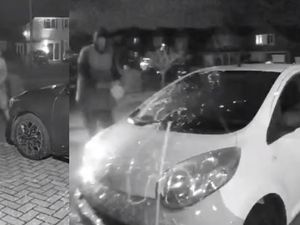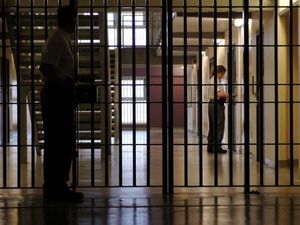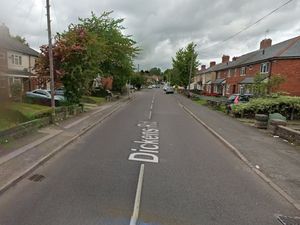REVEALED: Shocking scale of trafficking and grooming in the West Midlands
The shocking scale of trafficking and grooming gangs across the West Midlands has been revealed in a series of police reports.

Official documents dating back to 2009 show West Midlands Police was not fully aware of the extent of the region's high level of vulnerable youngsters and how to deal with the problem.
One report says that although the majority of suspects were from an Asian background, police were concerned about the dangers of racial stereotyping when dealing with incidents of abuse.
Another document details the lack of trust between police and social workers and the dismissive attitudes officers had towards vulnerable runaways.
Reports also show how children living at home were targeted with more frequency than those in care, with abuse going on virtually unheeded for years.
It has also emerged that the force's failure to cope with the rising problem was so acute the identities of many of those engaged in the abuse was either not known or outdated.
The comments come after confidential police reports dating back to 2009 revealed how it struggled to cope with the scale of abuse across the region.
Assistant Chief Constable Carl Foulkes said: "These reports, spanning six years, give a real insight into the journey we have undertaken along with our partners into investigating and tackling child sexual exploitation.
"There is no doubt that there has been a significant cultural change within the force in respect of this issue and it is now very clear that the responsibility of tackling CSE lies with every police officer, staff member, PCSO and special constable.
"The force has carried out extensive work to train officers across the force in how to identify and deal with CSE so we can gain as much intelligence as possible and thereby improving the outcomes for victims.
"We continue to take great steps and as a result of our efforts and without doubt the coverage within local and national media, we are seeing more victims coming forward to report abuse, knowing we will take their allegations seriously and treat them sensitively and respectfully.
"Tackling child sexual exploitation is at the heart of everything we do as a force working closely with our local authorities across the area and the respective Children's Safeguarding Boards. This work has led to the creation of Multi-Agency Safeguarding Hubs and more effective joint responses to child protection issues.
"The force has invested heavily in its resources to tackle child sexual exploitation putting significant numbers of specialist officers into its Public Protection Unit, which provides us with robust investigation teams and more capacity to deal with the more complex cases.
"CSE affects all communities and remains a top priority for us – nothing is more important in policing than protecting vulnerable people. "
West Midlands Police and Crime Commissioner David Jamieson said 'serious issues' remained that police and partner agencies were working on together.

These police difficulties in dealing with the widespread and escalating scale of the abuse has not been made public until now.
In Sandwell in 2010, two vulnerable young women were noted as being 'at high risk' of sexual exploitation. Police believe they were being groomed for – or were already being sexually exploited – at the time of the report.
Two other young women were identified as being at high risk in Dudley, along with six girls in Walsall during the same period.
Officers in Wolverhampton, where two groups of young women had been identified, said alcohol, drugs and acts of physical violence were 'key leverages' used by offenders to groom victims into prostitution.
The worst area in the West Midlands was Birmingham, where almost half of all offenders were said to live. No recent figures have been released, although a report from this year could be issued in the coming weeks.
The reports also reveal the largest proportion of victims, at 44 per cent, did not reside in children's homes and lived with their parents or other family members.
"The force has very limited insight into the threat, and the intelligence profile related to children who are not in care is non-existent," a document said.
"The current situation poses significant challenges for West Midlands Police in protecting children and enhancing the trust and confidence agenda." Victims were also said to frequently abscond from their family homes, leading to calls for the force to improve the way it deals with such situations.
The most common offenders were said to be Pakistani males aged between 16 and 26, and the majority of the victims were white.
But the report showed senior officers had warned of the dangers of racial stereotyping amid claims of a 'widespread problem of British Pakistani men exploiting under-age white girls'. Police said 'convenience and accessibility' may be the prime drivers for those looking for victims, rather than race.
But another report, entitled Internal Human Trafficking For Sexual Exploitation Within the West Midlands, revealed that of 139 female victims, 78 per cent were white. A 'significant proportion' of the suspects were said to be of Muslim background.
The oldest document dates from October 2009 and highlights a lack of trust between police and social workers said to be prevalent at the time. Some of the unsympathetic attitudes from the authorities towards vulnerable runaways are also detailed.
"For a number of years children in care or residing in children's homes have repeatedly run away," it states. "Unfortunately they are often perceived to be streetwise and able to look after themselves while police officers consider them to be a nuisance and permanent drain on resources.
"Children's services, home managers and social workers are frustrated by what they perceive to be a lack of interest and action from police officers.
"Officers are equally frustrated by their perception the workers are not protecting the children and let them runaway, often within minutes of a return to their home, which has undermined opportunities to protect missing children."
The report adds children in care who regularly go missing 'receive very little police attention', despite police intelligence showing young girls were being groomed by older men who were often involved in drug trafficking and other criminality.
It also says the identity of those currently engaged in abuse was not known and some intelligence gained in 2008/09 was no longer current.
"There is no current intelligence on vehicles or telephone numbers," it says.
Police identify three 'organisational risks' in the 2010 report, including missing opportunities to secure convictions by dealing with offences only in isolation.
The report also highlighted 'repeat offence locations', including hotels, parks, and private homes.
Offences were said to include group rape and sexual assault, indecent assault, child abuse and false imprisonment.





